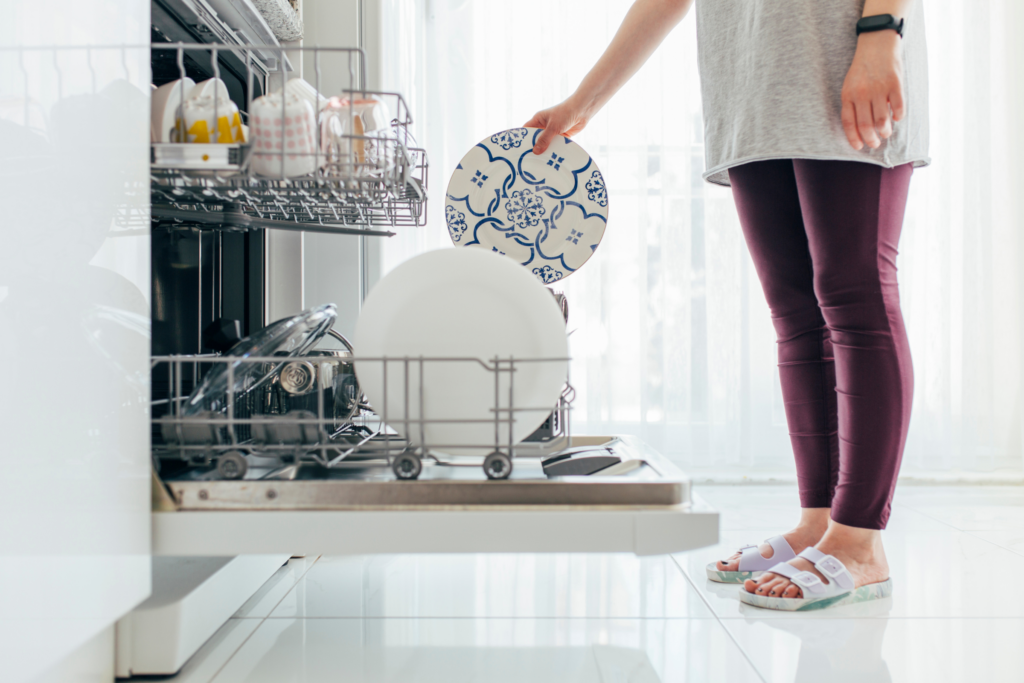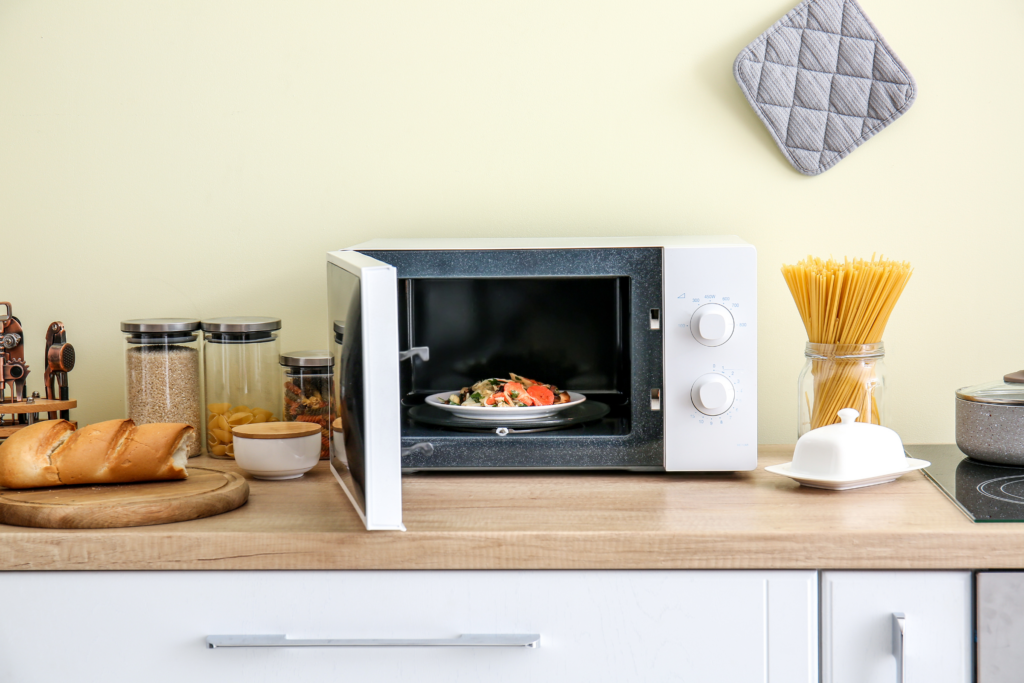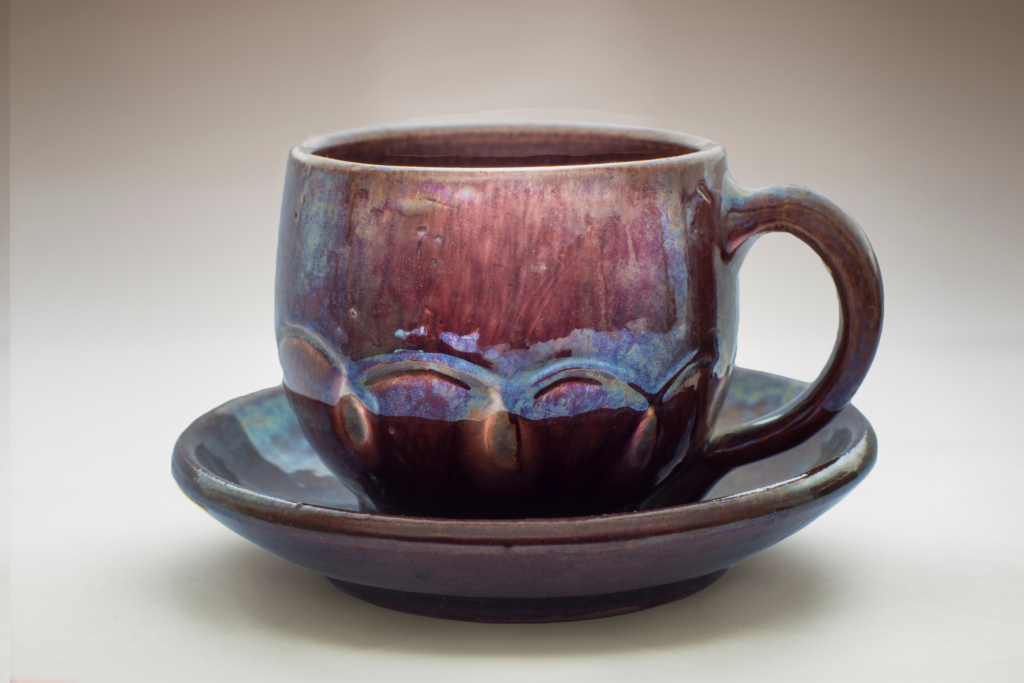Does Microwave Safe Also Mean Dishwasher Safe (And Vice Versa)
Most people at this point know to check to see whether or not their cups, plates, and other kitchen crockery are microwave safe before heating them up or dishwasher-safe before putting them into the dishwashing machine.
But, if something is microwave safe, is it also dishwasher-safe? If something is dishwasher safe, is it also microwave safe?
Plastic, glass, and ceramic kitchenware are commonly used in both microwave ovens and dishwashers, but there is no guarantee that any one item will be both microwave-safe and dishwasher-safe, depending on the specific materials used. Typically, glass will always be microwave and dishwasher-safe, while plastic and ceramic might be one or the other or even not safe in either one.
It is essential to verify that the materials are labeled as microwave-safe and dishwasher-safe, as certain compositions can break, crack, or release harmful substances when exposed to these appliances’ conditions. Manufacturers often designate specific symbols and markings on their products, which you should always check out before using them.
In the following sections, we will explore more about the specific materials, their resistance, and considerations to keep in mind when selecting microwave and dishwasher-safe kitchenware.
Microwave Safe vs Dishwasher Safe
| Microwave Safe | Dishwasher Safe | |
|---|---|---|
| Key feature | Heat resistance | Durability |
| Main environment | Microwave oven | Dishwasher |
| Potential hazards | Melting, harmful substances release | Warp, crack, and damage resistance |
What does microwave safe mean?
Microwave-safe items are designed to withstand the heat generated by microwave ovens without getting damaged or causing harm. They don’t contain materials that could release harmful substances when heated.
A key feature of microwave-safe items is their ability to resist heat, withstand sudden temperature changes and remain stable in a microwave environment.
Microwave safety measures:
- Always use microwave-safe containers or dishes, which are usually labeled as such.
- Avoid using metal, foil, or non-microwave-safe plastic containers.
- Ensure the containers have ventilation to allow steam to escape and prevent pressure buildup.
- Be cautious with hot food or liquids, and use oven mitts to prevent burns.
- Microwaving longer than recommended can damage the container and may lead to injuries.

Common microwave-safe materials
There are several materials commonly used in microwave-safe containers and dishes, including plastic, ceramic, and glass. These materials allow microwaves to pass through and heat the food without causing harm to the container or the microwave oven itself.
Plastic: Microwave-safe plastic containers are designed to withstand high temperatures without melting or releasing harmful chemicals. However, it is important to note that not all plastics are microwave-safe. Typically, products made from High-density polyethylene (HDPE), Polypropylene (PP), and Polyethylene terephthalate (PET/PETE) plastics will be labeled as microwave-safe.
Ceramic: Most ceramics, like porcelain, can be used in microwaves as long as they do not have metallic paint or components. Ceramics should be free of cracks and breaks, as they may weaken and lead to breakage in the microwave. Importantly, many hand-painted or custom ceramic mugs and bowls likely won’t be labeled microwave-safe.
Glass: Microwave-safe glass is suitable for heating and cooking, but it’s important to ensure that the glass does not have a metallic coating or parts, as these can cause sparking and potential damage within the microwave.
Microwave safety symbols – what do they mean?
When looking for dishwasher or microwave-safe products, it is important to look for safety symbols on the packaging or the product itself. These symbols indicate whether the item is compatible with microwave use or not.
Some common symbols include:
- A series of wavy lines, which indicate that the product is microwave-safe
- A dishwasher icon, usually a square with two bars and a dish inside, indicates the item is dishwasher-safe
- A crossed-out microwave symbol, which means the item should NOT be used in the microwave
It is worth noting that other materials like stainless steel, wood, silver, aluminum, and certain plastics are generally not microwave-safe. These materials can block microwaves, cause sparks, or even damage the microwave oven.
What does dishwasher safe mean?
Dishwasher-safe items, on the other hand, are designed to endure the high temperatures and harsh detergents used in dishwashers. They can withstand the mechanical action of the washing cycle and not get warped, cracked, or damaged. The primary characteristic of dishwasher-safe items is their durability and resistance to the cleaning and drying process in a dishwasher.
Dishwasher safety measures:
- Confirm that items are dishwasher safe by checking the label or packaging.
- Pre-rinse heavily soiled items before placing them in the dishwasher, using the appropriate cleaning agents.
- Place sharp objects such as knives and skewers with their points facing down to avoid injuries.
- Avoid overcrowding the dishwasher, allowing enough space between items to ensure proper cleaning and drying.
- Check for damage or warping after every cycle, replacing items if necessary.

Common dishwasher-safe materials
There are several materials that are considered safe for use in dishwashers. These materials can withstand the heat, water, and chemicals used in the dishwasher without being damaged or posing a safety risk.
Some common dishwasher-safe materials include:
- Ceramic: Most glazed ceramics, stoneware, and porcelain dishes can be safely washed in a dishwasher.
- Glassware: Most glassware can be washed in a dishwasher, but it is essential to ensure that they are placed securely to avoid potential breakages or chipping.
- Stainless Steel: Items made from stainless steel, such as pots, pans, and cutlery, can be safely washed in a dishwasher.
- Silicone: Silicone baking tools, utensils, and other dishwasher-safe items can withstand high dishwasher temperatures.
- Plastic: Although not all plastics are dishwasher-safe, many are designed to withstand the heat and water used in dishwashers. Look for products specifically labeled as dishwasher-safe or check the manufacturer’s recommendations.
However, some materials should not be placed in a dishwasher:
- Wood: Wooden items, such as cutting boards, utensils, and teak, can warp or split due to the high heat and water in dishwashers.
- Copper: Copper pots and pans can tarnish when washed in a dishwasher.
- Fine China and Handmade Pottery: These items can be delicate and may not be suitable for dishwasher use. Check the manufacturer’s recommendations, and when in doubt, hand wash these items.
- Knives: High-quality knives may become dull when washed in a dishwasher.
- Styrofoam, Bamboo, and Melamine: These materials should not be placed in a dishwasher.
Dishwasher safety symbols – what do they mean?
To determine if an item is dishwasher safe, look for dishwasher safety symbols on the packaging or the item itself. These symbols will usually appear as an image of a wine glass and plate with water droplets, sometimes accompanied by text, such as “dishwasher safe” or “top rack only.” When in doubt, consult the manufacturer’s recommendations for specific materials and products.
By understanding the different materials and dishwasher safety symbols, you can ensure that your dishes are washed safely and efficiently in the dishwasher, preserving their quality and appearance.
Factors involved with microwave and dishwasher safety
| Factors | Dishwasher Safety | Microwave Safety |
|---|---|---|
| Heat and Temperature | Use hard plastics and glass baking dishes. Avoid materials that can melt, warp, or break. | Avoid metals like copper and aluminum foil. Use materials that can withstand high temperatures. Avoid materials that can cause misshapen or damaged due to high temperatures and pressures. |
| Chemicals and Detergents | Ensure items are compatible with dishwasher cleaning agents. Avoid exposure to chemicals that can cause discoloration or contamination. | Ensure items are not contaminated or leaching harmful chemicals. |
| Size and Shape | Use items that can be effectively cleaned by water and detergent. Avoid irregular shapes that can make cleaning difficult. | Use items that can heat evenly. Avoid larger and thicker items that might not heat evenly. |
| Labels and Packaging | Follow guidelines on safe use provided by manufacturers and only use items labeled as dishwasher-safe | Use items labeled as microwave-safe |
Heat and Temperature
Microwaves and dishwashers both generate heat, which can potentially damage certain materials, like plastics and certain coatings.
In microwaves, the magnetron generates radiation that heats water molecules, while dishwashers use heating elements to create high temperatures for cleaning and drying. When items like plates, utensils, and food containers are exposed to these heat sources, it can cause melting, warping, or even breakage.
Some materials, such as hard plastics and glass baking dishes, can withstand high temperatures, making them safer for use in both appliances. Metals, like copper and aluminum foil, should be avoided in microwaves due to the risk of fire and damage to the magnetron.

Chemicals and Detergents
Dishwashing detergents contain chemicals that can potentially harm certain materials like plastics and coatings. Exposure to these chemicals may cause discoloration, contamination, or even chemical leaching.
It is important to ensure that items labeled as microwave-safe are also compatible with dishwasher cleaning agents to prevent issues with stains, breakage, or transferring harmful chemicals to food.
Size and Shape
The size and shape of items can also impact their dishwasher and microwave safety. Larger and thicker items might not heat evenly in a microwave, and irregular shapes can make it difficult for water and detergent to clean all surfaces in a dishwasher effectively. Materials like polystyrene and non-stick coatings can become misshapen or damaged due to high temperatures and pressures in these appliances.
Labels and Packaging
Labels and packaging often give clear indications of whether an item is dishwasher- or microwave-safe. Manufacturers typically test their products and provide guidelines on safe use. It is essential to recognize and follow these instructions to avoid potential accidents or contamination.
In general, only use items labeled as microwave-safe in microwaves, and make sure they are dishwasher-safe before placing them in a dishwasher. Limit exposure to high temperatures and harsh chemicals to prevent damage, contamination, and ensure the safety and functionality of the products.
Kitchen crockery that usually isn’t microwave or dishwasher-safe
When it comes to kitchen tools, it’s essential to know which ones require special care to ensure their longevity and functionality. In this section, we will discuss some materials and designs that may require particular attention when handling and cleaning.
Ink, Metallic Paint, and Glazes
Utensils and dishes that have ink, metallic paint, or glazes can be sensitive to dishwasher cleaning. The heat and chemicals from dishwasher detergents can cause these decorative elements to fade, chip, or even peel away.
Manufacturers often recommend hand washing these items to preserve their appearance and function. When using such tools in a microwave, ensure that the ink or metallic paint is microwave-safe to prevent damage to the item or the oven’s heating elements.

Insulated Mugs and Dinnerware
Insulated mugs and dinnerware are designed to keep your food and beverages warm or cold for an extended period. They utilize materials like double-walled stainless steel or vacuum insulation to help maintain their temperature. These items may not perform well in a dishwasher, as the heat and water can compromise their insulating properties.
Additionally, the wavy lines on some insulated mugs can be a sign that the item may not be microwave-safe. It’s best to consult the manufacturer’s instructions for proper care and use for such items.
Let Us Know How We’re Doing!
Did this expertly prepared resource answer your question?
Do you have another question about home maintenance, home improvement projects, home appliance repair, or something else?
Get more information, send in questions and keep the discussion going by contacting the I’ll Just Fix It Myself company customer service team at at 1-800-928-1490 or Email us at [email protected]
